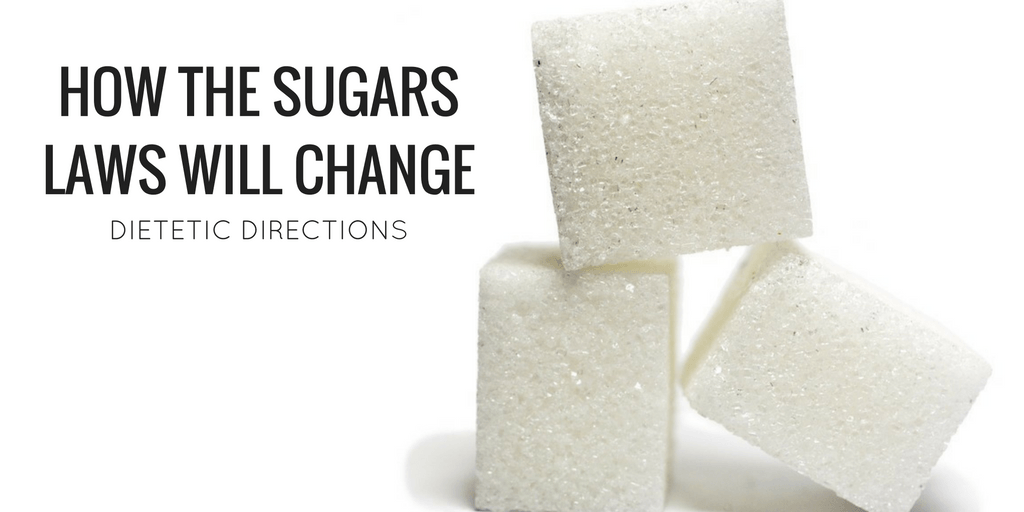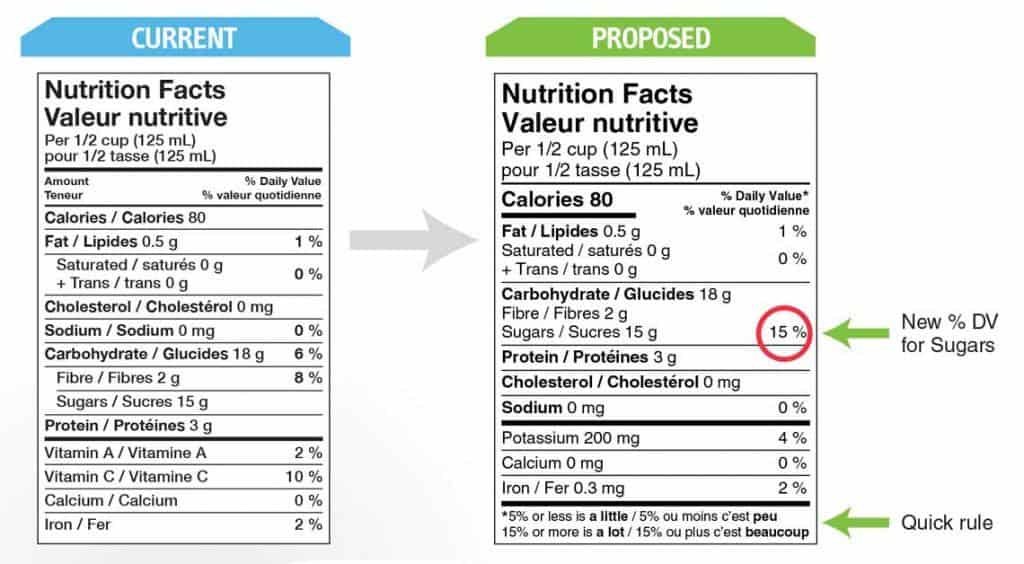
How the Sugar Labeling Laws will Change
Have you noticed that sugar does not have a Percent Daily Value (%DV) on food labels? Many are surprised and frustrated upon this realization. Without a %DV, how are consumers to interpret if 22 grams of sugar in vanilla Greek yogurt is “a little” or “a lot”? Thankfully, help is on the way.
After consolidation with the public, health organizations, health professionals (including dietitians) and food industry, Health Canada has confirmed that there will be changes to the current food labels to make them easier to understand and interpret.
Today, I will highlight the top changes for sugar on Canada’s revised nutrition label. I believe these changes are a step in the right direction to label literacy and choosing foods with less added sugar.
You can check out the full list of the proposed nutrition label updates.
Updates to Sugar on the NEW Nutrition Facts Table:
- Sugar will be required to have a percent daily value (% DV).
- Allow consumers to interpret if a product contains “a little” or “a lot” of sugar based on %DV.
- The %DV will now be defined at the bottom of the nutrition facts table as:
- 5% DV or less is “a little”
- 15% DV or more is “a lot”
Added sugars to be grouped together on the ingredient list:
- This means less detective work for consumers since all forms of added sugar (ie. fruit puree, fructose, juice, syrup, molasses etc.) will be displayed together.
- Since ingredients are listed by weight in descending order, grouping all sugars together will increase the weight for all different forms of sugar and this will move the group of “Sugars” higher in the ingredient list.
New Sugar Label Shortcomings:
- Added sugars will not be displayed differently on the nutrition facts table; instead there will continue to be one line for total grams of sugar.
- This is despite requests by dietitians and health professionals to display “added sugar” (sugars added by the manufacture) on a separate line.
- Dietary guidelines recommend limiting intake of “added sugars” but not decreasing the intake of naturally occurring sugars in things like fresh fruit, vegetables and milk.
- Speak with a dietitian if you’re interested in further education on distinguishing added vs. naturally occurring sugars based on the current and new label.
What will the %DV for Sugar be Based Upon?
Health Canada chose 100 grams of sugar as a ‘benchmark’ for making product comparisons. Please note that this is not a recommended sugar intake.
- Foods containing naturally occurring sugars will often fall below the 15% DV for sugar, which would be considered “a lot of sugar”
- Frozen unsweetened strawberries (6%), canned fruit in water (10%), broccoli (1%), carrot (3%), milk (13%), plain yogurt (12%) – all have less than 15% DV sugars, and some have less than 5% DV, containing only “a little” sugar.
- Foods containing added sugars will often fall above the 15% DV for sugar, considered “a lot of sugar”
- Soft drinks (26%), apple juice (25%), canned fruit in syrup (21%), chocolate milk (26%), sugar-sweetened yogurt (31%)
Bottom Line:
The new nutrition labels will make it easier for consumers to make food decisions based on sugar in a product. Consumers will have a percent daily value for sugar and if a serving contains 15% of sugar or more, it would be considered “a lot”. Foods with naturally occurring sugars should not be limited but encouraged as part of a nutritionally balanced diet.






